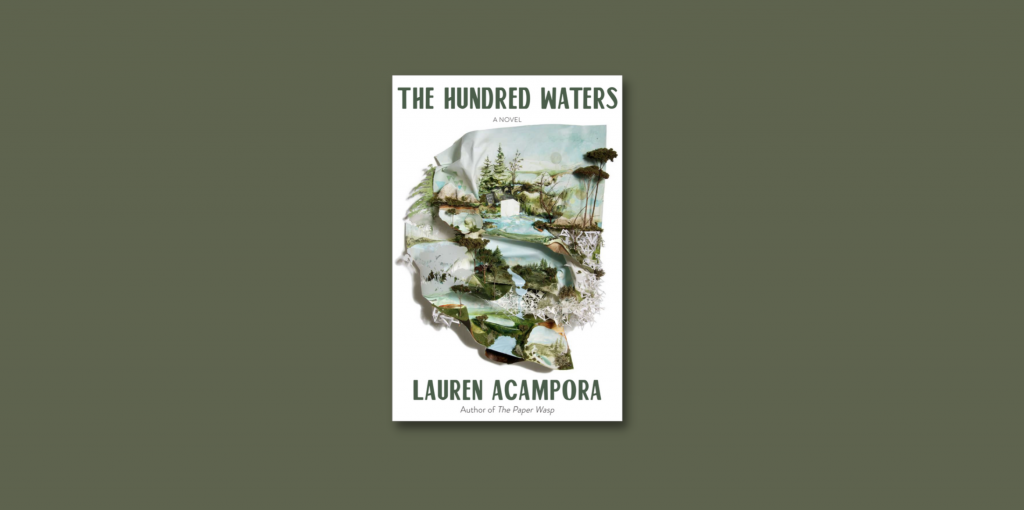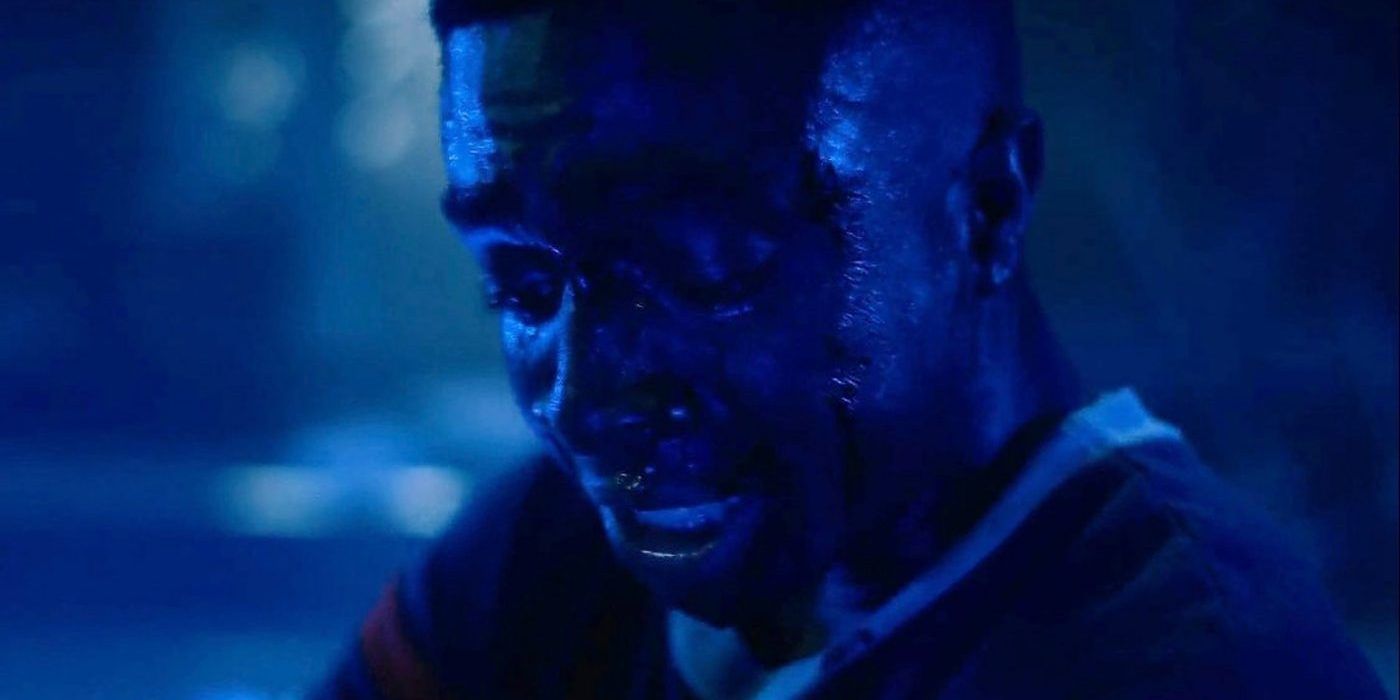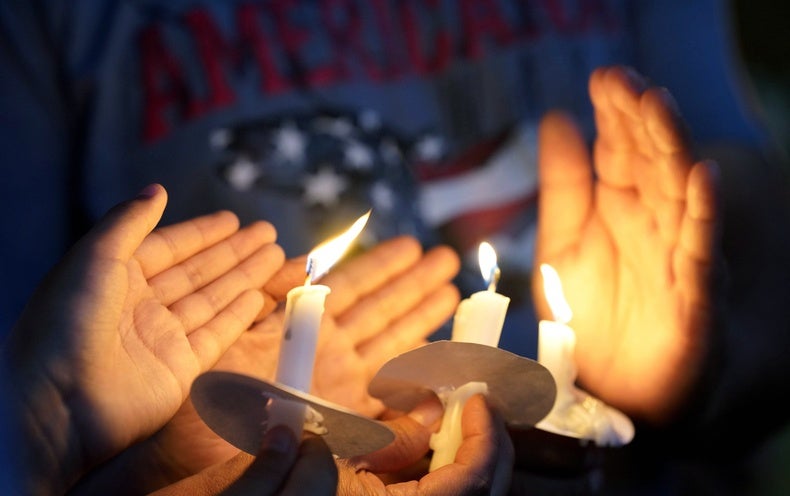 In The Hundred Waters, Lauren Acampora conjures cul-de-sacs, country clubs, and art galleries to draw readers deep into the fictional town of Nearwater, Connecticut. The tightly-paced novel—one that echoes Celeste Ng’s Little Fires Everywhere and Tom Perrotta’s Little Children—mines the secrets that lie beneath the town’s polished, affluent sheen. Louisa Rader, a former model and photographer, has returned to her hometown of Nearwater, where she lives with her architect husband and preteen daughter in a custom-built white and glass cylindrical home. The Hundred Waters examines this complicated landscape of aesthetic perfection, while peeling back layers of class and environmental anxiety.
In The Hundred Waters, Lauren Acampora conjures cul-de-sacs, country clubs, and art galleries to draw readers deep into the fictional town of Nearwater, Connecticut. The tightly-paced novel—one that echoes Celeste Ng’s Little Fires Everywhere and Tom Perrotta’s Little Children—mines the secrets that lie beneath the town’s polished, affluent sheen. Louisa Rader, a former model and photographer, has returned to her hometown of Nearwater, where she lives with her architect husband and preteen daughter in a custom-built white and glass cylindrical home. The Hundred Waters examines this complicated landscape of aesthetic perfection, while peeling back layers of class and environmental anxiety.
Peering through the often-distorted lens of photography, art, and architecture, Acampora pushes readers to think critically about authenticity and ultimately argues that art—whether written or visual—should disrupt the status quo to change the way we see.
Leslie Lindsay: The Hundred Waters explores ideas around art, home, family, the suburbs, displacement. But I think overarching question in this novel is about illusion: Is reality tangible? Or might it all go up in smoke?
Lauren Acampora: You’re right that the book is deeply involved with notions of reality and illusion. Louisa’s story is driven by her struggle with past and present, memory and reality. Which has more weight in her consciousness? Which, in the end, is more real? There are moments when the protagonist, Louisa, feels untethered from her physical surroundings. Having reached middle age, her past experiences have accrued enough to sometimes feel more real than her current moment. Our present moment is illusory, by definition, because it’s impossible to capture—and so in essence we all live largely in the past. As we age, I think memory and imagination become even more entangled with reality.
The novel also aims to highlight the overlaps between art and life, imagination and experience. At one point, Louisa says, “It’s just art.” To which the reply is, “What does that mean?” The larger question at hand is: what, really, is the difference between art and life? Is life truly more real than art? Because so much of anyone’s life is lived in their imagination, we can never really know another person’s mind—even the minds of those closest to us—or how far removed from our shared reality it may actually be. We can only ever know our own minds, even if they, too, seem foreign at times.
Creating a home—especially in the suburbs, where houses occupy plots of land—is an attempt to carve out and claim something physically tangible, a slice of reality for ourselves. Of course, the idea of owning land or being secure within the walls of a house is illusory; land can’t ever be controlled, and a house is always vulnerable. Control and security are illusions, if necessary ones. In the end, the only things we can own are our minds and imaginations. Those are the only things we can truly understand as real.
LL: This novel is deeply rooted in the art world. You come from an artistic family yourself and married to artist Thomas Doyle. I am curious if you’ve always wanted to explore art in your writing, and if your partner’s work influences?
LA: I’ve always been drawn to art as a subject for fiction. When I was younger, I considered pursuing art myself, but found that I lacked the patience for the materials and for the often slow, painstaking physical processes of art-making. I’m better suited to writing. Although it, too, can be incredibly slow and painstaking, writing fiction lets me be a dilettante, stepping into different fields of interest—including the lives of artists and the vagaries of the art world—without committing to them.
Artists are perennially interesting to me because they’re often obsessives, and obsessives are my favorite kind of characters: people who find themselves so captivated by a personal vision that reality seems to recede before it. An artist’s own self-generated aims sometimes threaten to subsume the interests of other people, even their loved ones. It can seem bewildering and even narcissistic when artists dedicate themselves to a hunt for something that only they can see. I find this conflict to be endlessly rich for fiction.
I wouldn’t say that Thomas and I influence each other’s work so much as that our similar outlook and interests played a part in bringing us together—and having absorbed many shared experiences over the years, our respective work has a certain echo. It’s nice to have a partnership with a creative person working in a different discipline, whose challenges are similar but not identical. And I stand in awe of his creative vision, meticulous patience, and dexterity with tools and materials.
LL: Class anxiety permeates The Hundred Waters. While set primarily in the glossy suburbs, there are echoes of a past in the city. Juxtaposing those two places, one might conclude that the suburbs absorb whereas the city creates. There’s a sense of stagnation in the suburbs and growth in the city, a thrumming energy in the city and careful curation of the suburbs. Can you speak to that dichotomy?
LA: Yes, in the novel, the city/suburb dichotomy can be seen as a dark/light duality that flips back and forth. The city represents darkness in many ways: it’s the location of confusion, doubt, and destruction for Louisa, whereas the suburbs were a beacon of light for her, promising comfort, stability, and control. Of course, the flipside is also true. The city represents youth and creativity for her, while the suburbs offer dull predictability.
I like the way you phrase it: that the city creates, and the suburbs absorb. People who are drawn to the city—New York, in particular—are usually those who want to make something. I was drawn there myself for this reason; I wanted to be in the hot crucible where ideas are forged into creation and shipped out into the world. The suburbs, on the other hand, are more often the recipients of such shipments than generators of them. But when I left the city for the suburbs, I found myself newly fascinated with this very consumption—of décor, fashion, art, music—and the ways in which suburbanites choose to curate the creations of others, to use your own term. This kind of curation functions as a creative outlet for some—but not enough of one, in my opinion. I sometimes think that much of the conflict and dissatisfaction that arises in suburban life is rooted in a lack of creative engagement, a deficit of constructive friction. When you’re not immersed in a productive puzzle of some kind, you’re bound to find trouble elsewhere.
LL: Turning a bit to the title, The Hundred Waters, borrowed from the Austrian visual artist, Friedensreich Hundertwasser, who wrote about the importance of greenery in city dwellings. I am curious if you might expand on that, please?
LA: Hundertwasser was a visionary artist and environmentalist who made kaleidoscopic paintings, designed utopian architecture, created postal stamps and flags, and sailed around the world—only sometimes clothed—in his boat, the Regentag (“rainy day”). He believed in hewing to the natural world, which is an enemy of the straight line, and integrating natural elements into our living spaces. He’s just the type of individual that excites me as a fiction writer, someone with an all-encompassing, unconventional ambition and uncommon drive.
I conceived of Gabriel, the novel’s teenaged artist-environmentalist, as a self-appointed acolyte of Hundertwasser, taking it upon himself to place sensational nature-focused art installations around his manicured town. His purpose is familiar among teenagers: to startle and provoke complacent adults for the greater good. He’s particularly fixated on the flood myth from the Bible and sees it as a fable for our time of climate crisis. He’s resentful of the somnolent rich in the town, including his parents, who he holds responsible for the erasure and angering of nature. He’s conflicted about whether he thinks the elimination of all humanity would be good or bad. He’s not conflicted about wanting attention for himself and his art, and he’ll go to extreme lengths to achieve it. So in the book, the notion of “the hundred waters” signifies approaching calamity, both global and personal.

 LL: The Hundred Waters contains references and cameos from both of your earlier works, The Wonder Garden and The Paper Wasp, which surprised and delighted me. Since The Wonder Garden was a collection of linked stories, I wonder if all of your work will somehow be linked? Did you plan on that sort of illusive connection, or did it just happen?
LL: The Hundred Waters contains references and cameos from both of your earlier works, The Wonder Garden and The Paper Wasp, which surprised and delighted me. Since The Wonder Garden was a collection of linked stories, I wonder if all of your work will somehow be linked? Did you plan on that sort of illusive connection, or did it just happen?
LA: Although I didn’t plan it, my work has become more connected over time. The Wonder Garden began as a collection of independent stories until I began to notice possible links between the characters and drew them purposefully together. Similarly, the setting of The Hundred Waters suggested a relationship with the world of The Wonder Garden, and I found pleasure in integrating them. The novel even includes a mention of the reclusive film director from The Paper Wasp, which I couldn’t resist inserting. There’s often a lightbulb moment when I realize how my characters might be related. I find that seeing characters and events through the eyes of others—from a variety of angles—adds dimension and insight into those characters and events. I hope to keep it up.



























































